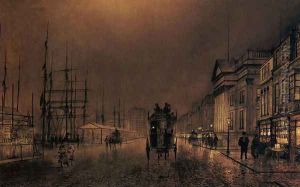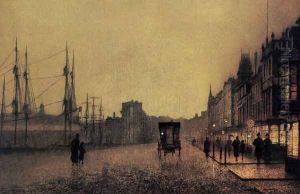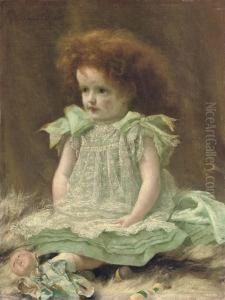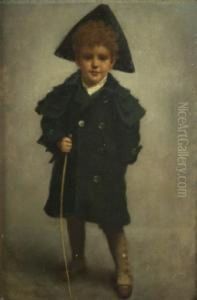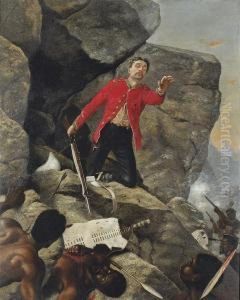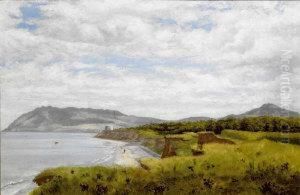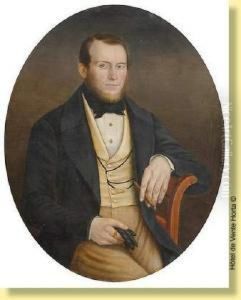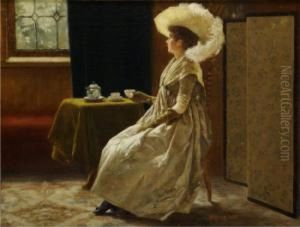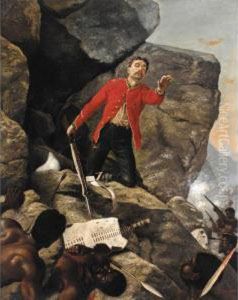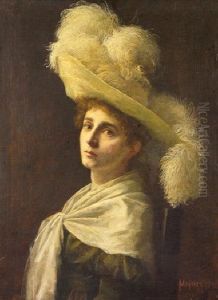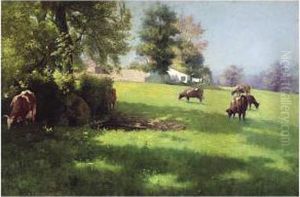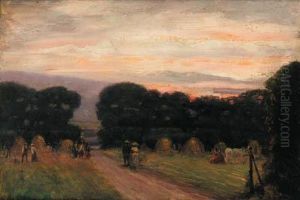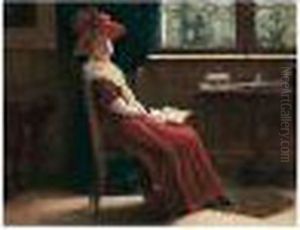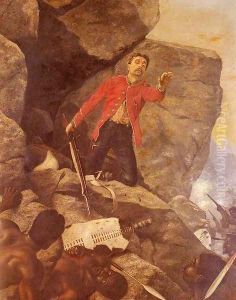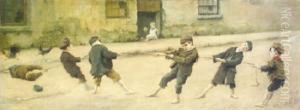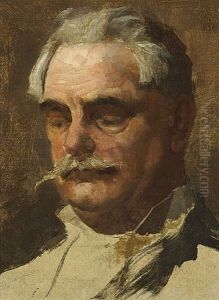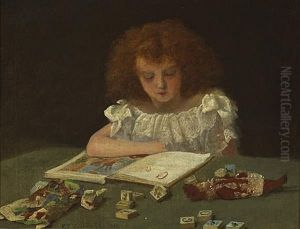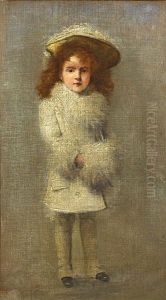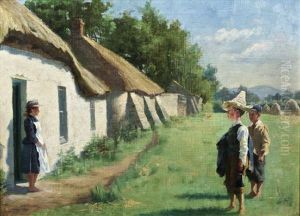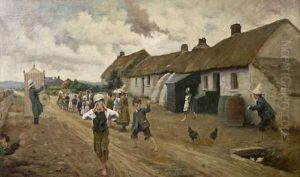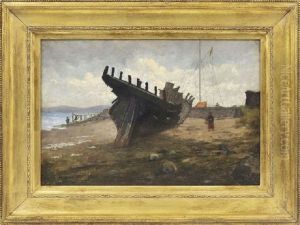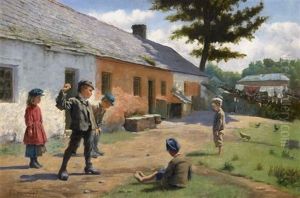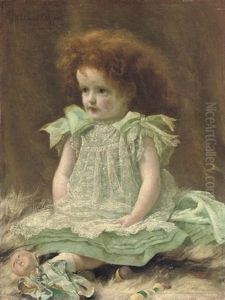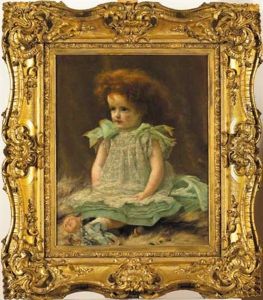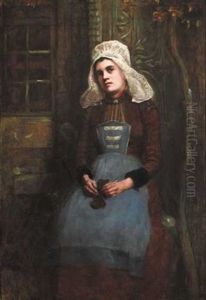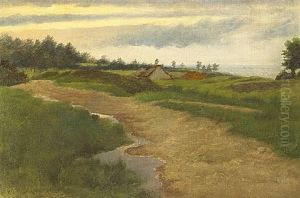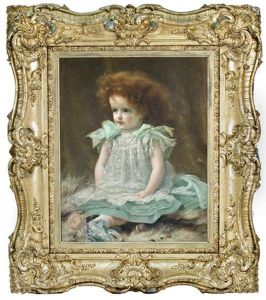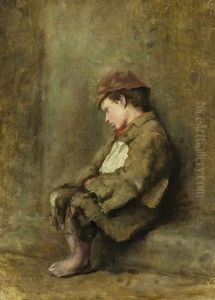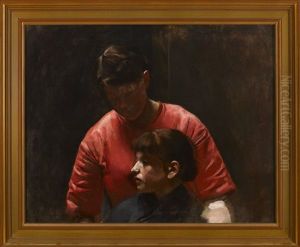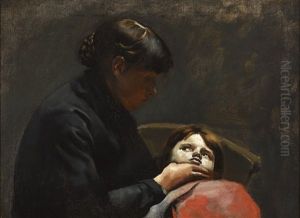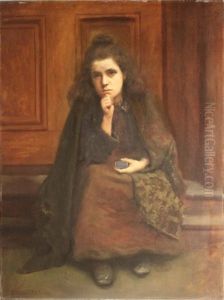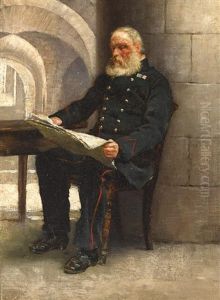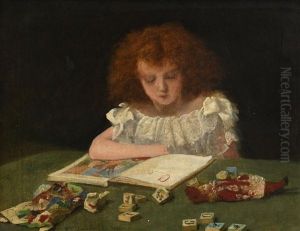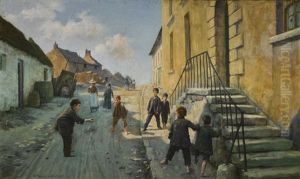Richard Thomas Moynan Paintings
Richard Thomas Moynan was an Irish painter known for his work in genre painting, portraits, and historical scenes. Born in Dublin, Ireland, Moynan initially embarked on a career in medicine before pivoting to pursue his passion for art. He enrolled at the Metropolitan School of Art in Dublin, where he honed his skills and later continued his studies at the Royal Hibernian Academy. His talent was recognized early in his career, earning him several awards and scholarships, which allowed him to study abroad.
Moynan's time in Paris and Antwerp played a significant role in his development as an artist. In Paris, he was exposed to the works of contemporary French artists, which influenced his painting style and subject matter. His paintings from this period began to exhibit the realism and attention to detail that would become hallmarks of his work. After Paris, Moynan moved to Antwerp, where he furthered his studies and was influenced by the Flemish tradition of painting.
Upon returning to Ireland, Moynan quickly established himself as a prominent figure in the Irish art scene. His works were regularly exhibited at the Royal Hibernian Academy, and he became known for his ability to capture the nuances of Irish life and society. Moynan's genre paintings, in particular, were celebrated for their humorous portrayal of everyday scenes and characters, often reflecting the social issues of his time.
Despite his success as a genre painter, Moynan also excelled in portraiture and historical paintings. His portraits are noted for their psychological depth and the skillful depiction of his subjects' personalities. Meanwhile, his historical paintings often depicted moments of national significance, imbued with a sense of drama and emotion that resonated with his audiences.
Richard Thomas Moynan's contribution to Irish art was significant, with his works playing a key role in the development of realism in Irish painting. Despite his early death at the age of 50, Moynan left behind a body of work that continues to be celebrated for its technical excellence and its insightful portrayal of Irish life and history.
